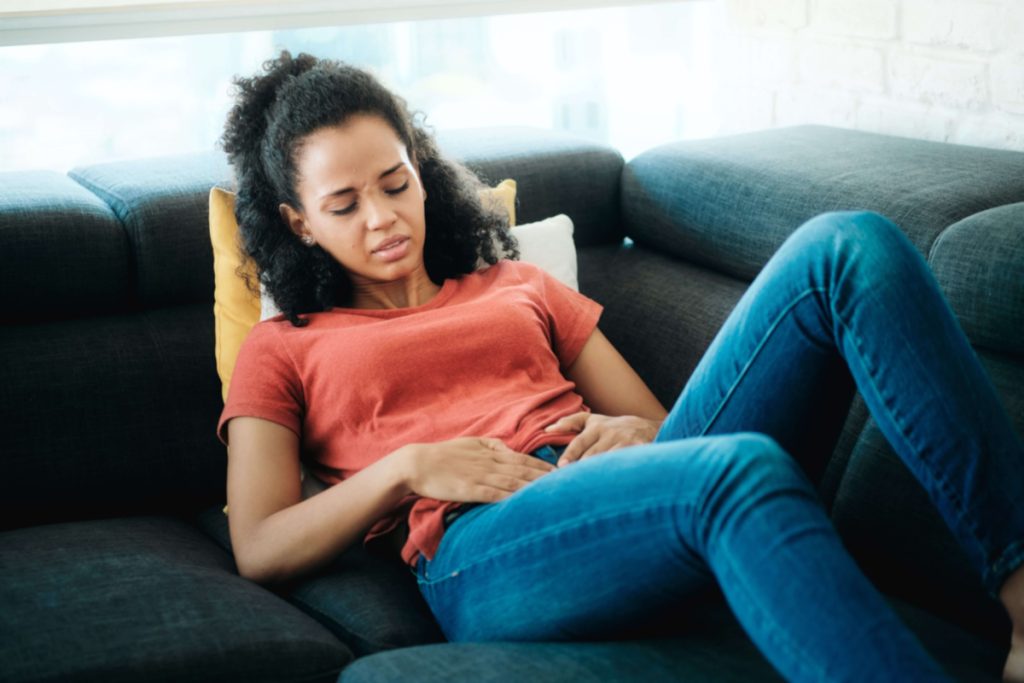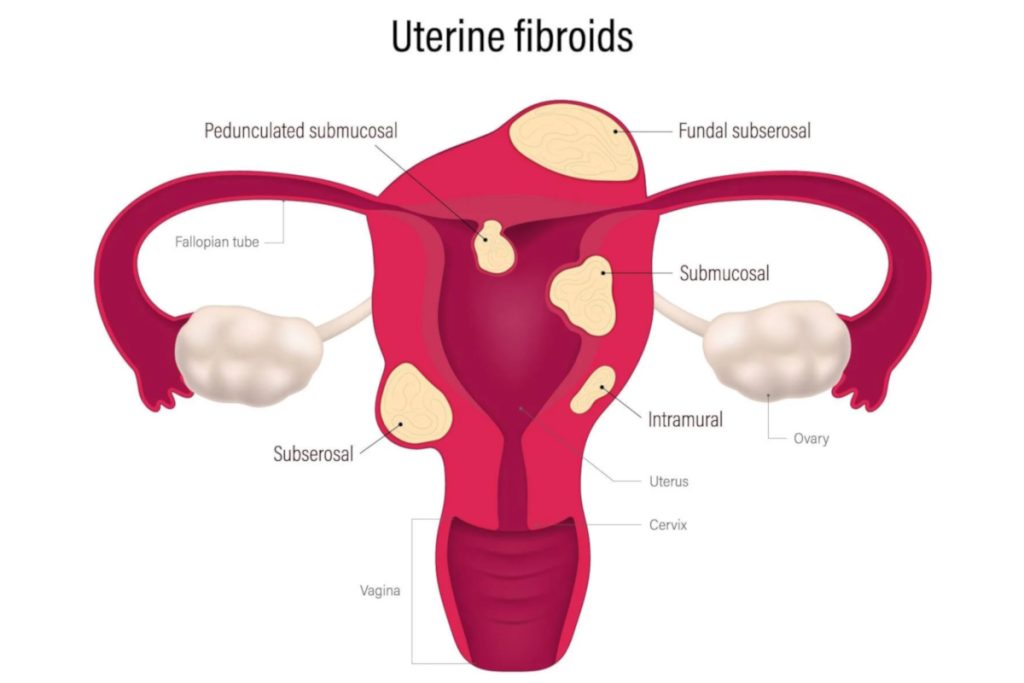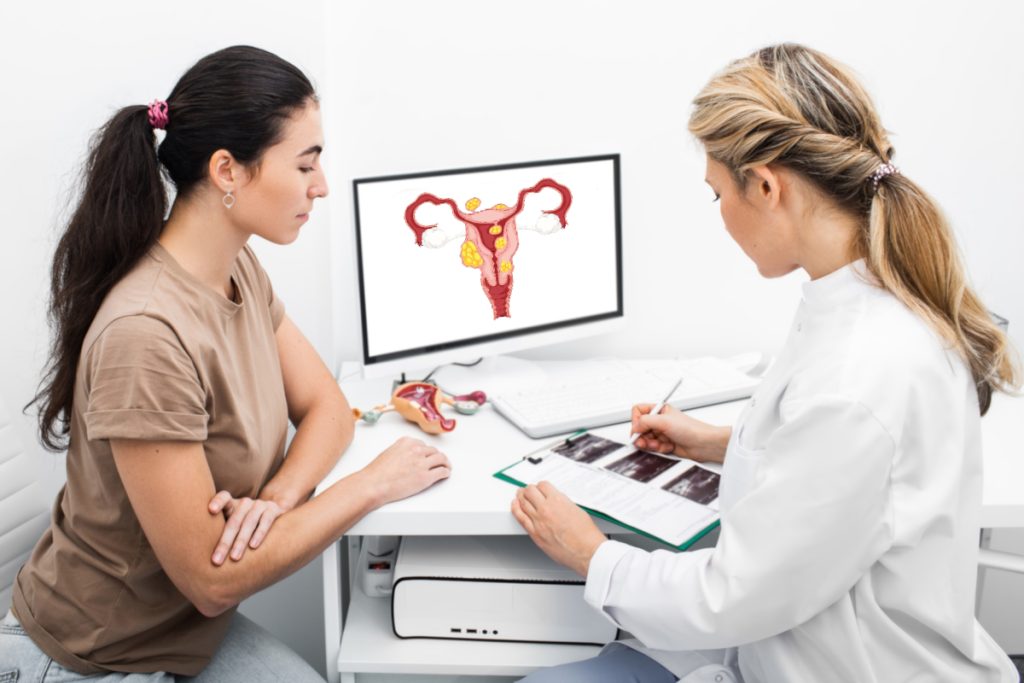Derine* recently learned she had fibroids. But when her doctor referred to a few of them as larger “pedunculated fibroids,” she was confused. Her doctor assured her that there was nothing to worry about and that there were plenty of treatment options available to her. She found a few social media groups on the topic which reassured her that she was not alone and gave her a better idea of the symptoms she was dealing with.
Many women want to know more about what pedunculated fibroids are, even if their doctor tells them not to be concerned. Another question that often arises is how fibroid doctors treat larger pedunculated fibroids.
Although the term pedunculated fibroids may lead to valid questions from women just like Derine who are curious about the potential for additional symptoms and discomfort and wondering what happens next, pedunculated fibroids aren’t more concerning than other types. Furthermore, while every woman’s fibroid situation is unique, safe and effective non-surgical options like uterine fibroid embolization (UFE) give fibroid doctors the flexibility to treat many fibroid types, including pedunculated fibroids.
Imagine Your Life Without These Fibroid Symptoms
- Heavy periods or abnormal bleeding
- Life interrupting cramps, pelvic pain, and pressure
- Long lasing periods, longer than a week
- Pain during sexual intercourse
- Back or leg pain
- Urinary frequency
- Excessive fatigue, with or without anemia
- Constipation and rectum discomfort
- Weight gain or bloating and swelling in the abdomen

What Are Pedunculated Fibroids?
Uterine fibroids affect up to 80% of all women by the time they reach age 50. Depending on your situation, you may have one or several fibroids of different types. In addition, they could all differ in size (as small as a pea to as large as a melon or grapefruit) and either stay that way or grow at different rates. They can also grow in different locations inside and outside the uterus.
Fibroid location is a particular cause for concern for many women, especially those who are pregnant or intend to have children in the future. While having fibroids doesn’t mean they will be symptomatic or that you can’t get pregnant, they can become quite a nuisance if left untreated and allowed to multiply and grow in more sensitive areas. This is where pedunculated fibroids can come into play.
The Office of Women’s Health breaks fibroids down into four types depending on location:
Intramural fibroids
Grow inside the muscles of the uterine wall, causing issues with uterine function. These are the most common, accounting for 70% of uterine fibroids, affecting one in four of all women of childbearing age.
Submucosal fibroids
Protrude underneath the uterine lining and into the uterine cavity, causing issues with uterine function. Some women notice heavy bleeding during menstruation and increased abdominal pain.
Subserosal fibroids
Tend to grow just outside the uterine walls, impacting surrounding organs. As a result, these can put pressure on the bladder, bowels, and abdomen.
Pedunculated fibroids
Hang by a thin thread or stalk inside or outside the uterus. Inside the uterus, this type of growth is called a pedunculated submucosal fibroid. Outside the uterus, it’s called a pedunculated subserosal fibroid. As fibroid doctors will explain, these fibroid types are likely to cause pain in the abdominal area due to obstruction of the uterus and surrounding organs. Additional symptoms include prolonged menstrual bleeding, cramping similar to what you’d feel during your period, and unexpected sharp pains.

Pedunculated subserosal fibroids can sometimes be mistaken for an ovarian tumor. Ovarian Brenner tumors and fibrothecomas are non-cancerous tumors that also show low signal on T2W imaging due to their large fibrous component.
The main difference between pedunculated fibroids and other fibroid types is the stalk itself—this stalk is what fibroid doctors call the peduncle. And although a pedunculated fibroid is non-cancerous and no less treatable than other types of fibroids, they are of particular concern when it comes to fibroid degeneration.
As these fibroid types hang outside the uterus, they are likely to rotate on the peduncle and become twisted. As a result, the fibroid stops receiving the blood supply it needs to live and instead begins to shrink. While this may sound like a good thing, many women ultimately suffer intense pain that lasts longer than a normal degeneration.
What Factors Cause Pedunculated Fibroids?
Just like other types of fibroids, pedunculated fibroids have several potential factors that cause them to grow:
- Hormones — Estrogen and progesterone stimulate the development of the uterine lining during each menstrual cycle in preparation for pregnancy. This causes fibroids to swell and grow rapidly during reproductive years.
- Birth control pills — These can help with certain side effects of fibroids, but they can make existing fibroids grow.
- Insulin-like growth factors — Certain substances naturally help the body maintain tissue, leading to fibroid growth.
- Certain foods — Red, processed meat, salty foods, and some carbohydrates contribute to growth.
What Are Treatment Options for Pedunculated Fibroids?
There are a variety of treatment options for fibroids. A fibroid specialist can assist with determining which one is best for you.
- Medications — These can help with some of your symptoms but won’t get rid of your fibroids.
- Acessa — A small probe is placed into a fibroid and heated up to destroy the fibroid. If you have multiple large fibroids or fibroids that are hard to get to, Acessa is not a good choice. It is also not covered by some insurance companies.
- Endometrial Ablation — This technique removes the inside lining of the uterus to reduce heavy bleeding. However, it is not a good option if you want to get pregnant in the future. It will not treat fibroids that are outside of the interior uterine lining.
- Uterine Fibroid Embolization (UFE) — UFE is a minimally-invasive procedure that, rather than removing fibroids with numerous incisions, cuts off blood flow to all fibroids— causing them to shrink and die. UFE is low risk, has no incision, is faster than other options, and is an alternative to surgery.
- Hysterectomy — An invasive surgical procedure to remove the uterus, which also removes all fibroids. In some cases, her fallopian tubes and ovaries are removed, too. This surgery tends to have a longer recovery period.
- Myomectomy — An invasive surgical procedure to remove fibroids without taking out the uterus. As a result, it is the procedure of choice for women who want to get pregnant. Most gynecologists insist on C-section after myomectomy.
- MR-Guided ultrasound — An ultrasound beam is focused on a fibroid to break it down.
- Sonata System — Using an intrauterine ultrasound device, radiofrequency energy shrinks the fibroid. Studies show Sonata works for non-pedunculated submucous fibroids and larger or deeper ones. However, as this is one of the newer treatments, patients report it is difficult to find a Sonata doctor near them.
Can UFE Treat Pedunculated Fibroids?
Yes, UFE—a non-surgical fibroid treatment—is a viable treatment option for all fibroids. It can also be called upon to safely shrink large fibroids before fibroid removal surgery to ensure a more successful outcome for patients who require surgical intervention. However, for many women, surgery is not their preferred option.
Rather than surgically remove pedunculated fibroids, fibroid doctors inject small particles into the uterine arteries and fibroid vessels to block blood flow to the fibroids. As a result, your fibroids shrink and die. When performed correctly, many women say they experience a high success rate with minimal discomfort.
Out of all the available treatment options, UFE is a unique procedure because of its ability to treat uterine fibroid symptoms—regardless of size, density, type, or location—without having to go through painful surgery and lengthy recovery time. As a result, patients have a quicker recovery time and a greater chance of avoiding additional complications.

The benefits of choosing UFE at Fibroid Institute are:
- Referrals are not required but are encouraged
- Mobile number given to every UFE patient to contact her doctor directly
- Procedure typically completed in under an hour
- In-office procedure instead of hospital stay
- Recovery time is 7-10 days
- Tiny wrist puncture, no need for vaginal access
- Avoid side effects of pharmaceutical hormone therapies
- All fibroids may be treated at the same time
- No incisions, which means no surgical scarring
- Over 90% of patients see dramatic improvement in symptoms
Don’t Suffer in Silence With Pedunculated Fibroids. Our Fibroid Doctors Can Help
Women do not need to suffer in silence when it comes to fibroids. Pedunculated fibroids are no less treatable than any other fibroid type, and it is possible to reclaim the pain-free life you have been missing. Thousands of women visit the Fibroid Institute Texas year-round to find relief from their fibroid pain. We are happy to cater to those needs and offer a nonsurgical solution, uterine fibroid embolization. At Fibroid Institute’s multiple Houston and Dallas fibroid clinics, we help thousands of women avoid fibroid surgery and find relief from their fibroid symptoms.
Our fibroid doctors are board-certified interventional radiologists and highly experienced UFE specialists at a practice that is 100% focused on fibroid issues. Your fibroid treatment team includes experts who are passionate about helping women become #FibroidFree.
Request a free 10-15 minute phone screening to determine if you are eligible. After the screening, if you qualify for UFE, you can schedule your onsite or telehealth consultation. Most major medical insurance providers cover the cost of UFE. Get started now with Fibroid Institute Dallas at 214-838-6440 or with Fibroid Institute Houston at 713-903-3733 or complete the form below.
Before starting any new treatment or if you have questions regarding a medical condition, always seek the advice of your doctor or other qualified health provider. This information is not a substitute for professional medical advice.
Fibroid Institute Texas serves the Dallas and Houston areas including Cedar Hill, Lancaster, Cockrell Hill, Highland Park, University Park, Park Cities, Garland, Mesquite, Richardson, Dallas, Sherman, Houston, Sugar Land, Katy, Webster, Clear Lake, The Woodlands, Universal City, Spring, Kingwood, Stafford, Conroe, Texas City, Cypress, League City, Bellaire, Addison, Carrollton, Plano, Frisco, Craig Ranch, McKinney, Allen, Fort Worth, Grand Prairie, Hurst, Euless, Bedford, Arlington, Hutchins, Irving, Duncanville, DeSoto, and more.
*Patient names and/or photos may be changed to protect patient confidentiality.

